Four Days in Mallangudi
Day Four, Thai Poosam
Early morning village scenes: so much is outside, in the open, on village roads and paths or in the open fields (filled with litter – it is true that I see it, even if they don’t – and I am bothered by it, even if they aren’t. It’s like a permanent toothache that with time softens into an almost forgettable background noise but ready at a moment’s notice to flare up and mitigate the pleasure or peacefulness one had the impression of feeling); women and children coming from the fields with empty buckets; others brushing their teeth with what looks like passion; kolams (today is Thai Poosam so the kolams are particularly vibrant and elaborate) freshly spread upon the street in front of each door of every home. Tea is drunk inside but breakfast is more often than not eaten outside. School holidays still for most of the children, so they are out and about, the bigger girls coming to take the smaller children…
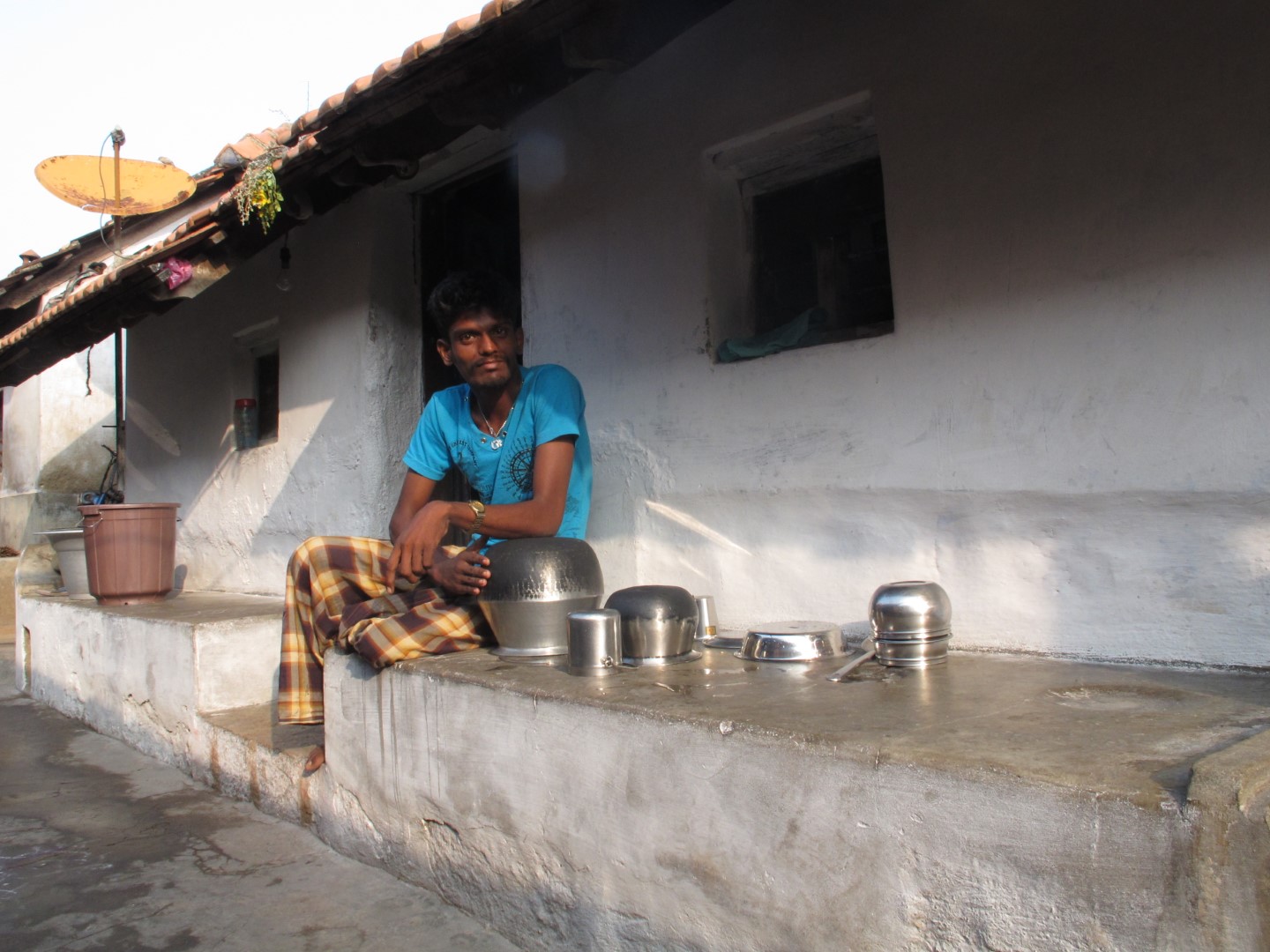
…just as I was writing these morning impressions, I heard chanting coming closer and closer, and all at once it dawned on me just where the bigger girls had taken the smaller children: not to the Pied-Piper but to Mutthaiya’s (The Old Man’s) home. They had all met there and begun a procession around the village. What I was hearing was their chanting as they were nearing to where I had been writing the preceding lines, at JR’s home. I ran to get my video camera and then followed the voices until I reached a small temple that I had never seen before and where they had stopped to chant, light camphor and distribute vibhuti (sacred ashes used in religious worship) to passers-bys. Then they went off again, down the road, all the while chanting Murugan’s glory and frequently interspersing the melodies by chiming out Haro Hara, Haro Hara, Haro Hara… It was similar to an Ayyanar procession in that every so often a villager (in this tiny village that turned out to be not so tiny after all) would stand at the side of the road to receive vibhuti. At one point, some women (Mutthaiya’s two daughters-in-law and two neighbours) had congregated to distribute sweet coconut milk and biscuits and candies to all the youngsters before the group continued its melodious procession from one end of the village to the other. And in the middle of this – and at the beginning and at the end – was Mutthaiya, the village elder, the sage, the pujari, the sami-adi, the old man respected by the entire village.
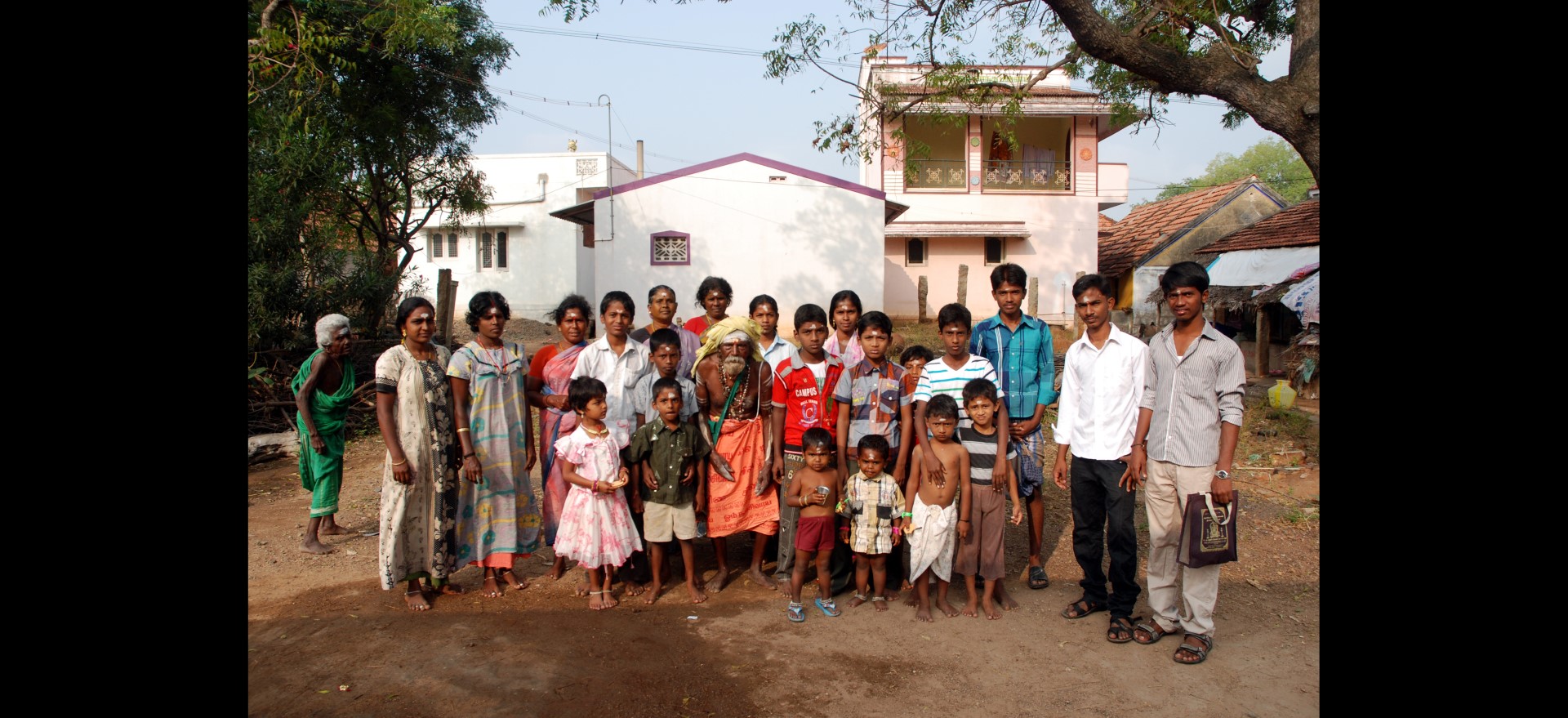
On another note, afterwards I accompanied JR to do her washing at the swimming hole/washing tank that the children had showed me many years ago. I remember that at the time (five?, six?, seven years ago?) the sparkling water looked so inviting that I told the children that I would swim with them one day. I must not have been wearing my glasses…or perhaps I had been, but those five, six or seven years have been witness to such visible and dismal changes that when JR and I arrived, it seemed as if I was seeing it for the first time. It is so filthy – the surroundings are heaped with litter of all sorts (old cloth and tatters; soap, shampoo, detergent wrappings; worn-out rubber chappals; styrofoam and plastic; plastic and plastic and more plastic) and the water is an unnatural colour of scummy khaki. The children play in it, the women wash and bathe in it all at the same time, as they do in all watering holes in all parts of this land – and it baffles me. It baffles me, still to this day, that they don’t seem to even notice the muck they are dipping their clothes and themselves into.
The contradiction is that in this time of such limited resources (actually, in India, it has always been a time of limited resources for the vast majority of the population), their use of that most vital resource, water, is quite restricted. I may be shocked by their, shall I say “direct and immediate recycling” of water, but ecologically (at least in terms of water-usage), they are model world citizens!
But back to the events of the day:
Took a quick bath, myself, but in the small bathing room near my house (and not in the bathing hole with the women) and readied myself to go to the temple. One always bathes before meeting god. I remember the time so many years ago, during my first visit to north Kerala to observe village Theyyam rituals, when I spoke at length with a village elder about the where-when-and-why of the following night’s ceremonies. When it was agreed that I would arrive at four a.m. to attend the ritual’s (two hour) climax and the old man said, “You must bathe beforehand,” I consented with a nod and a smile. Perhaps he wasn’t convinced of my sincerity or perhaps he just realized that it was all new to me, because he repeated the command three more times before he seemed satisfied that I had understood the importance of purity in the presence of divine forces. Since that time, I have had ample opportunity to witness the importance placed on purity as a sign of respect and a mark of devotion to god.
So I bathed and put on a fresh churidar – in India, I nearly always wear this three-piece set of clothing consisting of a tunic-like top, baggy pants and scarf. The churidar is common dress for women in the neighbouring state of Kerala, but in village Tamil Nadu, it is almost never worn once a woman is married (which is typically very early, in her late-teens or very early-twenties). Here, outside the house, women wear saris. They wear saris to temples and to festivals, to the market and to fields, to their jobs typing in an office, planting and plucking grain in a rice-field, carrying pans of gravel on a construction site.
When I arrived at JR’s home, she and Indurani began putting jewellery on my neck and ears, and flowers in my hair, and a bindi and vermillion on my forehead, and then, just when I had been decorated like a proper woman, they decided that I, too, needed to wear a sari. I really didn’t want to put one on. I tried very hard to get out of wearing it but they insisted with such passion that I acquiesced. For them, it is the only proper and respectful attire a woman can wear when she sets foot on sacred ground. For me, it is dreadfully confining and uncomfortable and a hindrance to my movements. Whenever I wear a sari (on special occasions like weddings and other various rites of passages) all my friends make a fuss over me and the complements gush from all directions. I appreciate the enthusiasm, and I understand just how delighted everyone is that I have made the effort to adopt their attire, but in reality I feel like a clod. I certainly possess neither the physical grace of an Indian woman, nor her bearing, nor the ease with which she masters each of her movements, whether that be bending or sitting or simply walking. As for me, I can barely take three steps without my toe getting caught in the hem of the material! As well, taking photos and wearing a sari are utterly incompatible…and so I knew that I would be sacrificing image-making for the satisfaction of the Mallangudi community parading me in public wearing traditional clothing. This is the main reason that I have little to show for the hours I spent celebrating Thai Poosam with my friends at Malai Kovil.
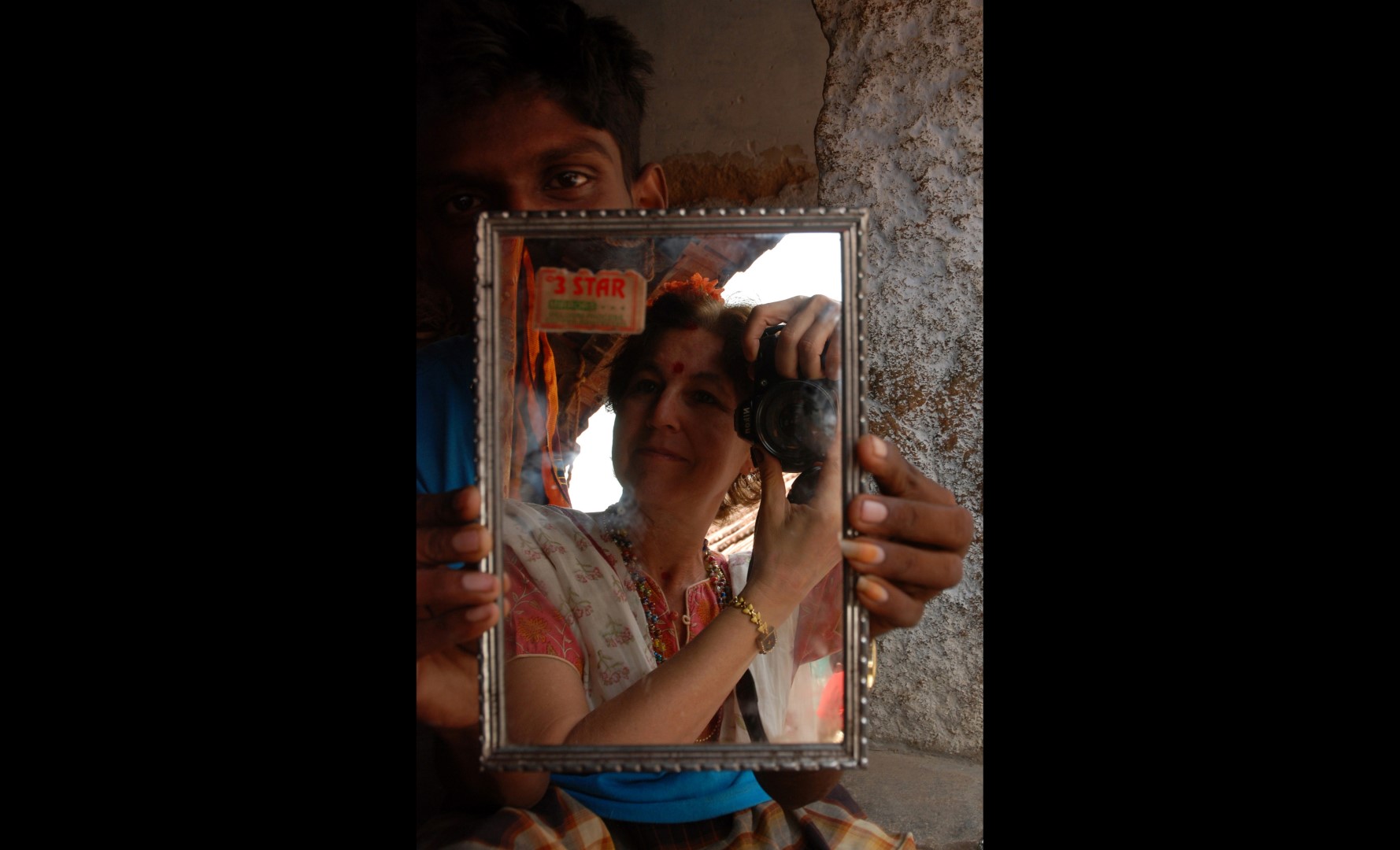
So JR and Indurani dressed me. As always, when I put on a sari, I have the distinct impression of turning into an animated Barbie doll (though with vastly different measurements, weight, height…) for the action is a totally passive one for me: I am not dressing myself but being dressed by others. I just strip down to my bra and underwear, hold out my arms like a scarecrow and let others take charge tying and tucking and pleating and rolling and pulling and pinning and adjusting and smoothing out the starched stiffness until everybody assembled agrees that I look pakka, perfect… “just like a Tamil lady.” We laugh that the only giveaway of my European origins is my pale midriff that seems to glow like a bright white light between the hidden petticoat and short chiffon blouse hugging my body.
As soon as I was transformed into a Tamil lady (and the neighbours’ oooohs and aaaahs were so loud that they drowned out the children’s laughter), we all walked together through the arid, granite boulder strewn fields to Malai Kovil (literally, Hill Temple), about 5 kilometres away. When I write “all,” I mean about twenty of us Mallangudi villagers. Actually, the entire village went to the Thai Poosam festivities, but because there were more than 500,000 devotees present, we bumped into fellow Mallangudi-ites only rarely.
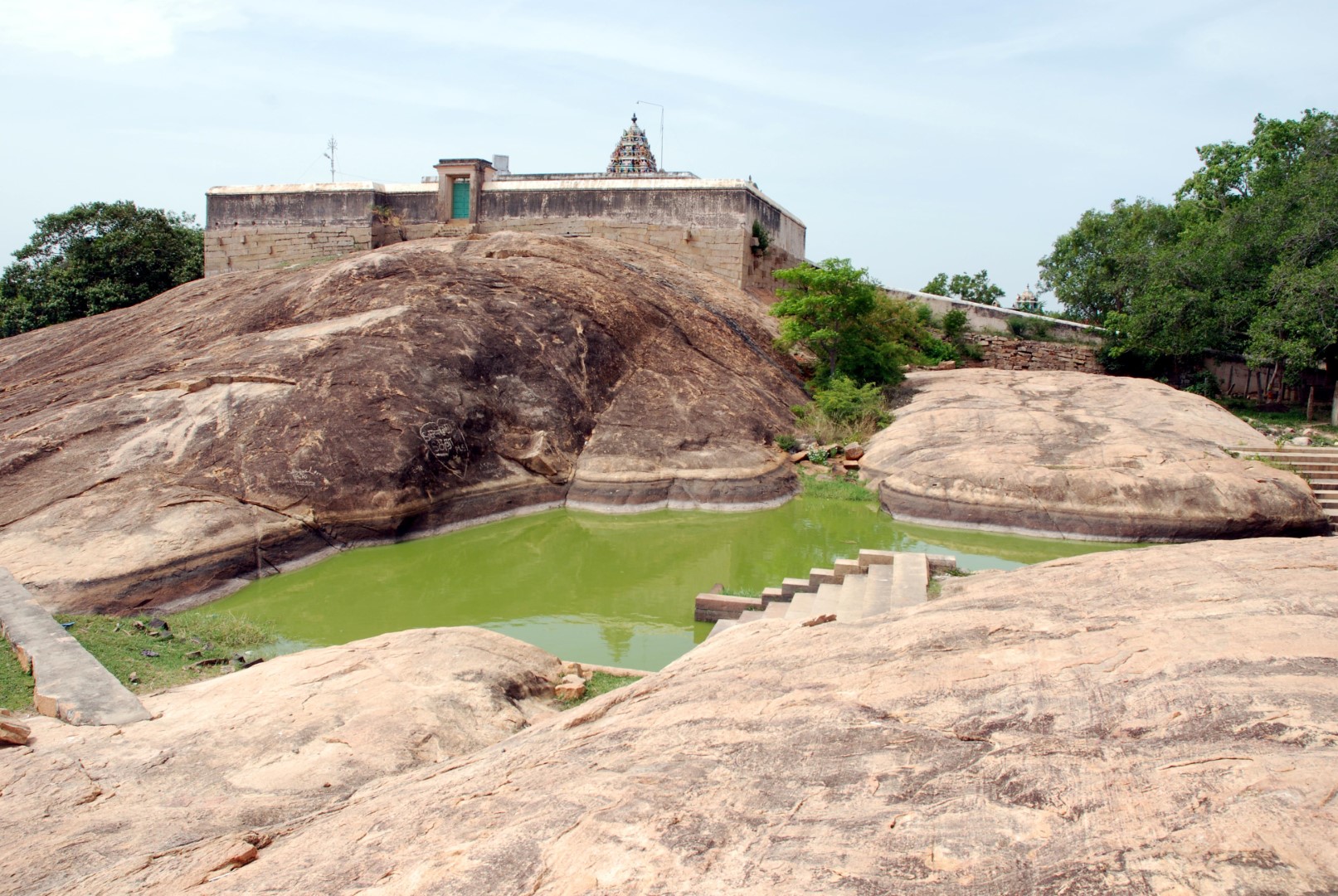
I won’t elaborate on the temple experience too much, but it is safe to say that of the 500,000 people there, I was the only vellikari. The stares, the wide grins, the “hi’s” and “where are you from’s” and “shake hands” did not stop from the moment I put my (bare) feet on sacred ground until I exhaustedly walked back home with my Mallangudi cohorts, three hours later. Of course, there was absolutely no malice, only smiles and grins and laughter. Tamilians are known throughout India for their exuberance and sociability. Never was their reputation more deserved than by the behaviour of a half-million devotees at the Thai Poosam festival in a village temple in the middle of Tamil Nadu.
The stones and gravel were hard on my soft, callous-less, winter feet and I swallowed the pain with tight lips but managed to keep up with the others who walked with such a quick, even pace that I wondered if the sharp gravel had been scattered in front of my feet only. I rounded the temple grounds and hill (malai), saw a bit of kavadi (a dance done while holding two carved wooden panels that are joined together and decorated to represent a sacred palanquin), drank moor (seasoned buttermilk) and ate chickpeas and briyani (pure veg, of course!) at the temple mess…I felt a bit frustrated to be accompanied because I would have preferred to take my time and stay or go as I pleased but that was not the way it was to be and it’s really okay. We stayed in a group of about ten and I felt privileged to be a part of the group.

We walked the five kilometres back to the village at about four and so my skin suffered a bit…not only do I have winter feet, I have winter skin! My bath, upon arriving back at the village, was a joy. (I have often joked that the only mantra I repeat regularly goes something like this: a bath, a shower, a bath, a bath, a bath) And then I grabbed my camera to take some last portraits before the light was too dim. The sun sets very quickly here in south India. It’s almost like a magician’s sleight of hand: now you see it, now you don’t.
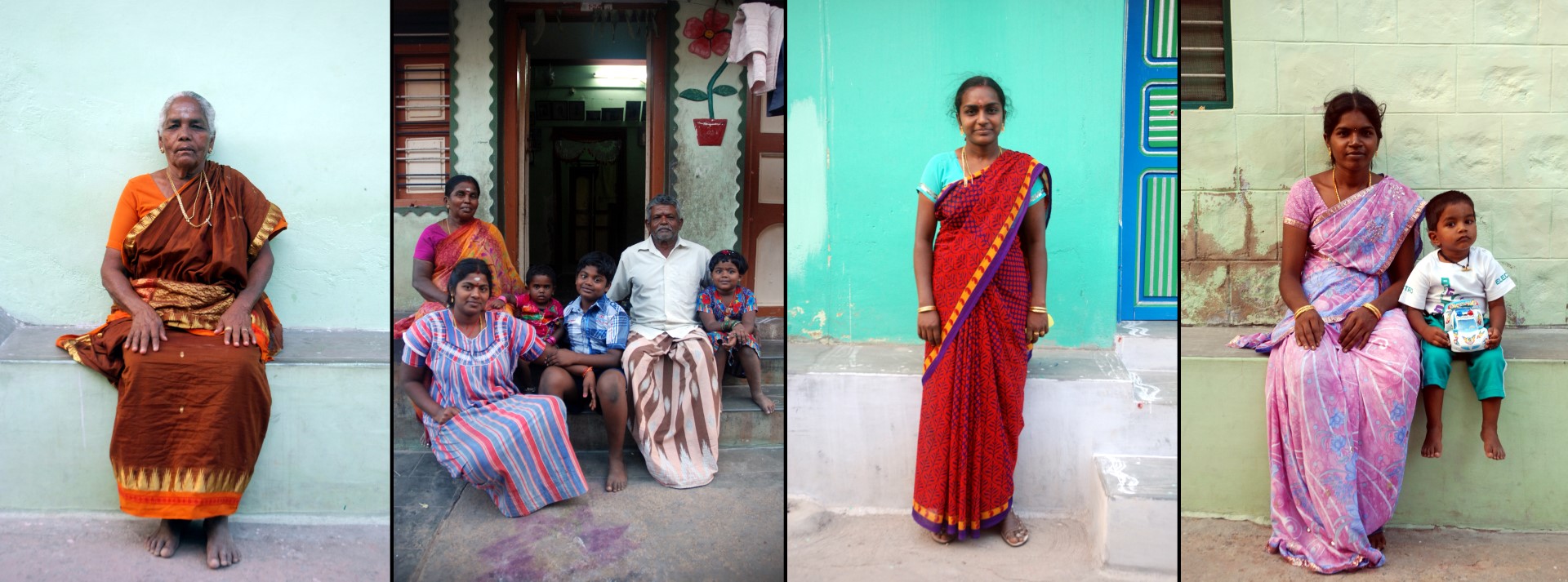
I was supposed to leave this evening but JR wanted to make a special going-away feast for me and thus she convinced me to stay until tomorrow lunchtime.
I chatted with everyone…only the women were around, as usual. And when I say chatted, it means that they chatted – often about me – and I just smiled and now and then, understanding a word or two, said something. Since I know that everyone appreciates me as much as I appreciate them, I don’t care at all about being the village idiot…it’s actually a role I feel comfortable playing!
Indurani called to me from inside the house where she was sliding fresh dosais off a skillet-like disc and layering them on a stainless steel plate that she put into my hands. Just as soon as I had finished eating and taken a place back outside on the porch, JR came inside and ate her fill. And finally, just when Indurani had joined us outside, Sukkanya’s father arrived. He is one of the few men I had met before, perhaps six years earlier, during one of his annual leaves from the Andaman Islands, where he worked for about ten years. At that time, he told me he had two jobs: he was a mason and a palm-reader. He read my palm that day and if I don’t have any clear recollection of what he said, the reason is two-fold: one, I have a very bad memory and two, he didn’t say anything that I thought was worth remembering. Except perhaps that if I hadn’t yet had the two major, life-threatening accidents that were clearly etched into my palm, I would live, accident-free, until I was very old.
This evening, Sukkanya’s appa passed by – not to read palms but to perform a special puja for JR and her family. I was told that there were pambu in the vayal – snakes in the fields – and the puja he performed, though it lasted a mere two or three minutes and included only the female members of the family, would keep all the owners safe from harm. When he had finished chanting and burning camphor tablets, he put a pinch of vibhuti into JR’s and Indurani’s mouth and then into a small piece of paper which he folded in the middle four times. I learned after that he took the tiny vibhuti-filled packet to JR’s fields where he set it afire and then dispersed the ashes in the flooded paddy.
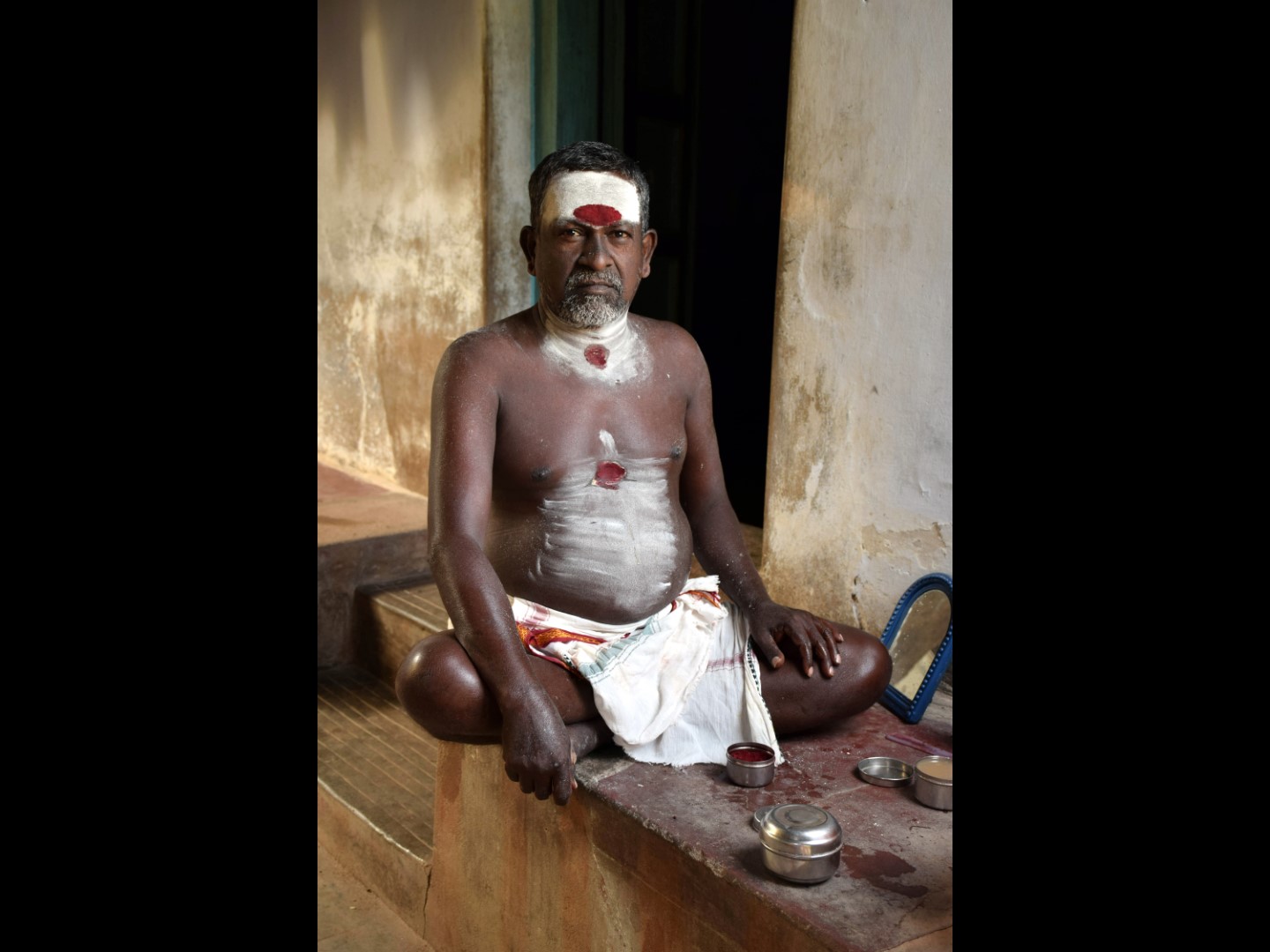
I certainly do not need a special puja or vibhuti or anything else to feel safe at JR’s home. And it seems that all Mallangudi feels as I do. Passers-by are common: it’s a bit like the centre of the village, the meeting place, the home where everybody congregates, where everybody feels at home. Is this due to JR’s particular warmth or her smile or her way of cuddling children? Is it due merely to her home being situated smack-dab in the middle lane of the village or the sprawling veranda-like platform facing her front door? Whatever the reason, here at Jayaretina’s home, I feel like I am not merely in the centre of the village but in the centre of a world whose heart beats to a steady rhythm of peace, joy, and wellbeing.
Day 3 ← | → Day 5